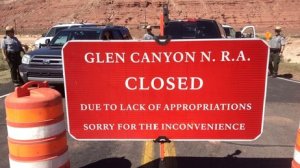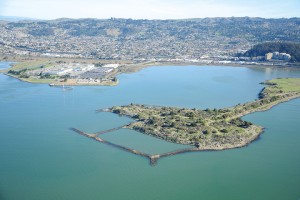As part of the ongoing campus initiative Global Urban Humanities: Engaging the Humanities and Environmental Design, the Arts Research Center co-sponsored the Reimagining the Urban: Bay Area Connections Across the Arts and Public Space on September 30, 2013. Participants have been asked to submit a blog post "on a keyword you see debated in the Bay Area arts, policy, and planning landscape." This posting is by Christina Gossmann, a second year in the Master of City Planning program at UC Berkeley.
Keyword: Public Nature?
The last session of the day, What is the “Bay” in the Bay Area? Creating Nature,
acknowledged the elephant in the room—the Bay—but it also revealed the
ambiguity of ownership surrounding this, “our” Bay. From Brad McCrea’s
mention of changing legal rights (“Most things you can do on land, you
can’t do in the Bay.”) to Louise Pubols’ historical account of the
Emeryville shoreline as a “junky throw-away space” where
artists/students/people were not afraid of “messing up,” we caught a
glimpse of an immensely complex puzzle: public nature.
 |
| Source: http://www.npr.org/2013/10/03/228719015/national-parks-close-as-other-public-lands-stay-open |
Curiously, and somewhat confusingly, national forests remain open. On
one hand, public forests have more access points than parks and are
therefore, simply logistically, harder to control. On the other hand,
“those lands are open to a wide range of public activities,” explains
Jarvis.
This reasoning is dissatisfying to me on multiple levels, and this is
where I will bring us back to “our” Bay. As Susan Schwarzenberg, Brad
McCrea and Louise Pubols have engagingly articulated, the Bay is very
much contested (just remember the “outlaws,” imperial powers and
polluting corporations all claiming a piece of the Bay). Moreover, I
would argue that, unlike National Park Service Director Jarvis claims,
the extent to which land can be used does not determine, or even
slightly influence, its access. Again, I’d like to point us to a timely
example.
 |
| The Albany Bulb. Source: http://www.berkeleyside.com/2013/09/05/whats-that-san-francisco-bay-as-seen-from-the-air/ |
My provocation is this: Maybe the question Linda Rugg raised around
the extent to which we define ourselves as people living by the Bay and
our impact on nature as well as nature’s (creative) impact on us, could
be altered to become a self-examining one: Who is the “we” interacting
with nature, and does every Bay Area resident have the access or right
to this interaction?
Christina Gossmann loves the challenge and thus impatiently awaits your email: christinagossmann@berkeley.edu
No comments:
Post a Comment